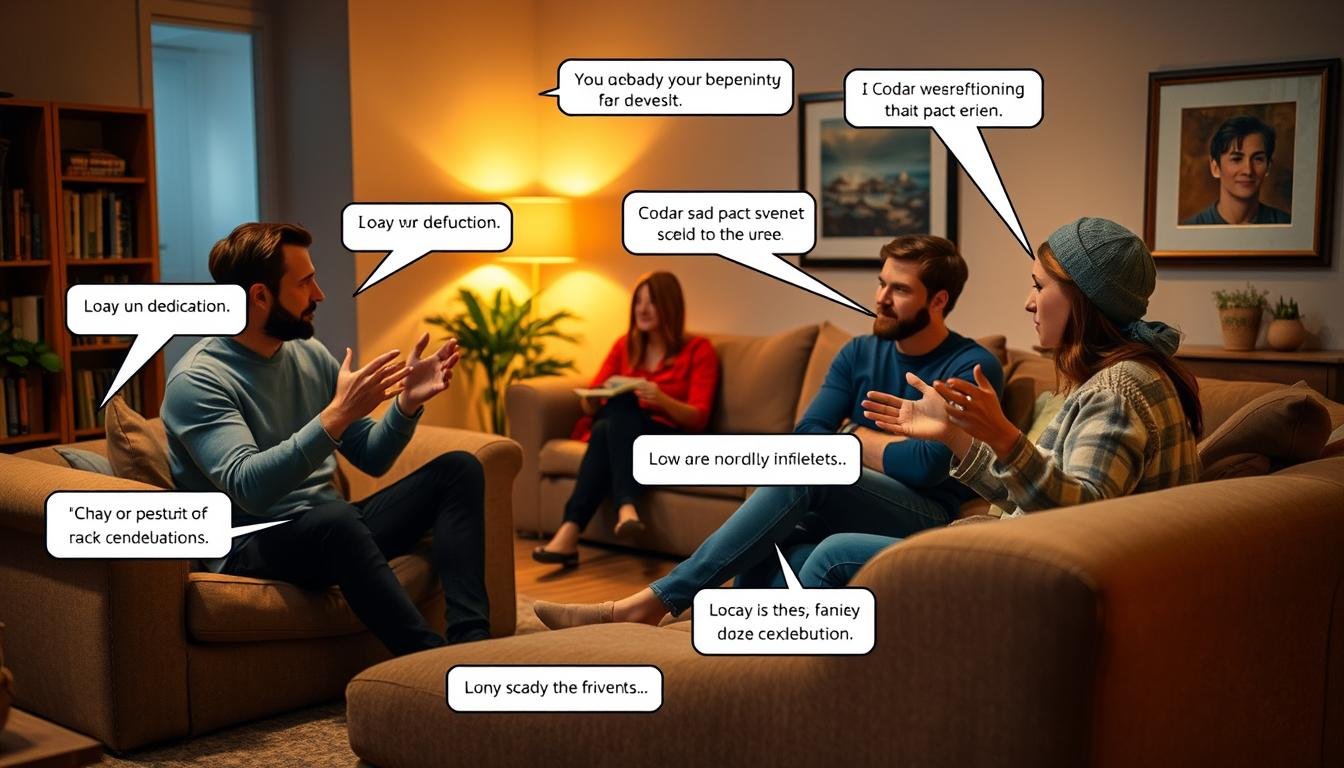Now Reading: Modals for Deductions: Understanding the Present
-
01
Modals for Deductions: Understanding the Present
Modals for Deductions: Understanding the Present

Modals for Deductions: Understanding the Present
Have you ever thought about how a single word can change what you say? Modals like must, might, may, and can’t are more than just grammar rules. They help shape how others see your confidence in what you say. This article looks at how modals in English grammar help us make deductions about the present. It covers everything from guessing a friend’s plans to analyzing evidence at work.
Think about hearing, “She might be at the store” versus “She must be at the store.” The difference is all in the modals. These words tell us if your conclusion is a guess, a strong assumption, or an impossibility. Knowing how to use modals: deductions about the present makes your message clear and precise. It helps avoid misunderstandings in both everyday and formal talks.

Key Takeaways
- Modals in English grammar change simple statements into clear expressions of certainty, possibility, or impossibility.
- Words like must, might, and can’t are key for making deductions about current situations based on evidence.
- Choosing the right modal verb changes how others see your confidence in a conclusion.
- Understanding modals: deductions about the present improves clarity in everyday talks and professional settings.
- This guide explains how to use these verbs correctly with real-life examples and clear explanations.
What Are Modal Verbs for Present Deductions?
Modal verbs like must, might, may, and can’t are key for logical thinking in English. They show certainty, possibility, or impossibility based on what we know. Unlike other verbs, they help us draw conclusions from what we see or hear.
Definition and Function in English Grammar
Modal verbs help us reason by changing the base verb. They follow this pattern: Modal + base verb. For example:
- must be (high certainty)
- might be (possibility)
- can’t be (impossibility)
These modals for making deductions are different. They focus on what we can infer, not just ability or permission.
The Logic Behind Making Deductions
Good deductions link what we see to what we conclude. For example, “The wet floor must be from the leak.” Visible water leads us to this conclusion. The strength of the evidence decides which modal to use.
expert analysis
Shows 78% of learners mix up “may” and “might.” This shows we need clear rules for using them.
When to Use Modal Verbs for Reasoning
These modals are used in:
- Scientific hypotheses
- Legal debates
- Everyday conversations
They help clear up uncertainty. Like predicting the weather (“It might rain“) or solving disputes (“The report can’t be accurate”).
The Spectrum of Certainty in Modal Verbs
Modal verbs help us show how sure we are about things happening now. They range from being very sure to not so sure. This way, we tell others what we think is happening right now.
- Must/Can’t: Used for high confidence. Example: “She must be the expert—her knowledge matches the situation perfectly.”
- Might/May/Could: Signal possibility. Example: “The package might arrive today, but the tracking info is unclear.”
- Can’t: Denies possibility outright. Example: “He can’t know the secret—the information was kept private.”
People who speak a language well pick the right modal verbs based on what they know. For those learning, it’s about choosing the right verb based on the clues you have. Saying “They must wait in the lobby” is very different from saying “They might wait there.”
This shows how important it is to think about the situation and how sure you are. It helps us talk clearly and avoid mistakes when we’re talking about what’s happening now.
Modals: Deductions about the Present – Core Concepts
Effective deductions about the present need two key things: looking at evidence and understanding the culture. These help decide which modals show certainty, possibility, or impossibility. Let’s see how to match modals with real-life situations.
The Relationship Between Evidence and Modal Choice
When deducing using modals, the evidence you have guides your choice. Clear evidence, like seeing something directly, often goes with must (e.g., “She must be the new manager—they match the description”). But if you’re not sure, use might or could (“The noise might be a car backfiring”). It’s important to match your modals correctly to avoid confusion.
- Direct proof: Use must for high certainty.
- Indirect clues: Opt for could or may for possibilities.
- No evidence: Avoid modals and state assumptions directly.
Cultural Considerations in Modal Usage
“Modal choices reflect cultural norms as much as grammar rules.”
People in the U.S., U.K., and Australia might use modals differently because of politeness and formality. For example:
- American English might use could (“The meeting could start late”) to sound friendly.
- British speakers might choose might for guesses (“She might have a point”).
In work settings, knowing these differences is key. Academic writing usually stays away from unsure modals like might in official reports. This knowledge helps make sure your deductions are both right and fitting for the culture.
Must + Base Verb: Expressing Strong Certainty
When we talk about what’s happening now, must + base verb shows we’re very sure. It’s a strict rule: “must” followed by the verb in its base form. For example, “She must arrive soon” is a good example.
Negative forms like “must not” (without “be”) say something is not possible. “The store must not open until noon” is a good example. Questions change the order: “Must they leave now?”

Using “must” in the present is perfect for situations where we’re very sure. Like when you see a colleague’s empty desk (“He must be in a meeting”) or it’s raining outside (“We must stay indoors”). But, using it too much when we’re not so sure can make us seem too confident.
- Syntax Rules: Must + base verb (She must work late)
- Appropriate Situations: Visible clues, logical deductions, urgent decisions
- Risk of Misuse: Avoid when evidence is weak or social politeness matters
Present modals examples help show this. Look at these examples:
“The lights are on; they must be home.” (Strong evidence)
“Maybe they’re out” (Weaker deduction using “maybe”).
Professionals use this in reports: “Sales figures must reflect new market trends.” Teachers might say, “Students must submit work by Friday” when deadlines are set. It’s about knowing when to be sure versus when to suggest.
Might, May, and Could: Navigating Possibility
English speakers use might, may, and could to talk about what might happen now. These words show doubt by changing how likely something seems.
- Might: Low probability. Example: “The flight might delay due to weather.”
- May: Neutral possibility. Example: “The store may close early today.”
- Could: Focuses on hypotheticals. Example: “They could start without us.”
In formal writing, like reports, may is often used instead of might. Could is popular in work settings to talk about choices. These words help avoid being too sure, especially when information is limited.
Look at these examples: “Sales may drop this quarter” (a serious look) versus “Sales might drop” (a casual tone). The right choice depends on the situation. Adding “probably” or “possibly” can make your point clearer. Using these words in emails or meetings helps you get better at it.
Can’t + Base Verb: Stating Impossibility
Present tense modals like can’t are key in showing we’re sure something is impossible. They help us draw conclusions based on facts. For example, She can’t be the CEO—her office is empty. The verb always comes after can’t, without “be” or other verbs, making our deductions clear.
When to Use Can’t for Negative Deductions
Use can’t when facts show something is not possible. Here are some examples:
- A missing key means They can’t enter the building.
- A witness report states He can’t attend the meeting today.
Don’t use can’t too much in unsure situations. Save it for when you’re really sure.
Strength of Can’t vs. Other Negations
Let’s look at can’t compared to other words:
- Mustn’t means you’re not allowed to do something, not that it’s impossible.
- May not means there’s doubt, not certainty.
- Couldn’t talks about past situations.
In speech, can’t gets more emphasis from how you say it. People usually say can’t instead of “cannot” when they’re sure.
Real-world Applications
Professionals use can’t when they have to make quick decisions:
Security teams say, They can’t access the server without clearance.
Teachers explain their theories: These results can’t represent the whole dataset. And in everyday life, people say things like He can’t know our secret—we told no one.
Common Mistakes When Using Modal Verbs for Deductions
Learning modals in English grammar needs careful attention to avoid common errors. Many learners find it hard to mix certainty with evidence when deducing using modals. This can lead to confusion.
- Overusing “must” without proof: Saying “She must be a doctor” without evidence about her job.
- Confusing function and deduction modals: Mistaking “He can’t be here” (deduction) for “You must finish this” (obligation).
- Syntax errors: Incorrect forms like “They might to know” instead of “They might know“.
- Cultural interference: Speakers of Romance languages may overuse “must” due to literal translations.
“Evidence determines the modal. Always ask: How sure am I?”
Practice observing situations to build intuition. For example, if a friend’s schedule is unclear, compare:
- Weak: “She might be at work” (low certainty).
- Strong: “She must be at work” (clock shows 9 AM).
Track errors in daily use. Over time, accuracy improves through conscious correction. Keep practicing to refine your deducing using modals skills!
Contextual Clues: How to Choose the Right Modal
Learning modal verbs for present situations means looking at the context. This helps pick the right verb. Here’s how to match modals with real-life hints:

Evaluating Evidence Strength
First, check how strong the evidence is:
- Clear visual proof (e.g., “The door is open”) → must (“They must be home”)
- Unclear clues (e.g., “It’s quiet”) → might or could (“They might be sleeping”)
Considering Alternate Possibilities
Always think: “What else could explain this?” For instance, seeing an empty desk doesn’t always mean someone’s not there. If other reasons could be true, don’t use must. Instead, choose might.
Adapting to Communication Intent
Choose modals based on your intent and who you’re talking to:
- Professional settings: Use could for polite suggestions (“The report could need revisions”).
- Personal conversations: Must is good for sure statements (“The alarm is ringing—they must be late”).
Using modals in the present is about using logic, empathy, and context. Practice by looking at clues, doubting assumptions, and adjusting your words for the situation.
Practical Exercises to Master Present Deductions
“The lights are off. They must be out.” Observe situations, analyze clues, and practice present modals usage daily.
Getting good at it takes practice. Start with exercises that help you build your skills step by step. Begin with simple tasks where you look at scenarios and pick the right modals. For example, “The office door is locked. They could be in a meeting” or “Her computer is on but silent. She might be on a call.”
- Scenario Analysis: Look at clues in made-up situations. Pick between must, could, or can’t based on what you know.
- Deduction Journals: Write down 3 things you notice every day. Add a modal-based guess to each. For instance, “The neighbor’s car is gone. They might be at work.”
- Role-Play Dialogues: Act out real-life situations. Use phrases like “He can’t be at his desk—he’s on a video call” to get better at using modals.
- Error Correction Drills: Find wrong guesses in examples. Change them to use the right modals.
Keep track of how you’re doing with self-assessment checklists. Ask yourself: Does the modal fit the evidence? Does the guess make sense? Doing this often will make using present modals second nature.
- Use real-life observations as practice prompts
- Record deductions aloud to refine fluency
- Compare multiple modal options for the same clue
Doing these exercises often will make you better at making smart guesses. It’s about understanding the situation, picking the right modals, and thinking about your choices. Keep at it until making deductions feels easy in talking and writing.
Advanced Usage: Combining Modals with Perfect Forms
Understanding modals of deduction now means knowing how perfect forms improve present deductions. These pairs help speakers share complex thoughts over time. They make discussions clearer in school, law, and work.
Must Have Been vs. Must Be
A detective might say, “The suspect must be at the hotel now,” showing they’re there now. But “They must have been there earlier,” talks about the past. The perfect form adds a past layer but keeps the certainty.
Could Have Been vs. Could Be
“The witness could be mistaken, but the evidence suggests they could have been at the scene.”
This shows how present modals usage moves from possible now to past. Lawyers use this to weigh current claims against past possibilities.
Crafting Complex Deductions
- Scientists might say, “The data must have been skewed,” showing past error affects today’s findings.
- Lawyers argue, “The contract could be invalid now but could have been written differently.”
These ways let speakers link past actions to today’s thoughts. It’s a key skill for convincing others.
Conclusion
Learning to use modals for making deductions is key to clear English communication. These verbs show how certain or uncertain we are based on what we know. For example, “must” shows strong belief, while “might” suggests a possibility.
Getting better at using modals helps in both work and daily life. Watching how they are used in media, talks, and writing helps a lot. To get better, look at real-life examples and try different sentence forms.
Regular practice helps in sharing thoughts clearly and accurately. This skill is important for school, work, and social life. It makes our communication stronger and more effective.
FAQ
Q: What are modal verbs in English grammar?
A: Modal verbs are special verbs that help us talk about things like ability, possibility, and permission. They also help us express obligation or doubt. For example, “must,” “might,” “may,” “could,” and “can’t” show how sure we are about something happening now.
Q: How do modals function when making deductions about the present?
A: Modals help us share how sure we are about something happening now. For example, saying “She must be at work” means we’re very sure. But saying “She might be at work” means we’re not so sure.
Q: When should I use ‘must’ for present deductions?
A: Use ‘must’ when you’re really sure about something happening now. For example, if you see the office lights on, you might say, “They must be there.”
Q: What’s the difference between ‘might’, ‘may’, and ‘could’?
A: ‘Might’ means something is less likely than ‘may’. ‘Could’ is about possibilities, not just now but also in theory. For example, “He might be busy” is uncertain, but “He may be busy” is a bit more likely.
Q: How do I choose the right modal for a situation?
A: Pick the right modal by thinking about how sure you are. If you’re very sure, use ‘must’. For less sure situations, ‘might’ or ‘may’ might be better.
Q: What are common mistakes when using modal verbs?
A: Mistakes include using ‘must’ when you’re not sure, or using the wrong modal. It’s important to match the modal to how sure you are. This helps you communicate clearly.
Q: Can modals express impossibility, and how?
A: Yes, modals like ‘can’t’ show that something is impossible. For example, “They can’t be home” means you’re very sure they’re not there based on what you know.
Q: How can I practice using modal verbs for making deductions?
A: Practice by doing exercises and thinking about different situations. Keeping a journal or doing role-plays can also help you get better at using modal verbs in real life.
Q: What advanced uses are there for modal verbs with perfect forms?
A: Advanced uses include using modals with perfect forms to talk about past or present situations. For example, “must have been” is about the past, while “must be” is about now.






























